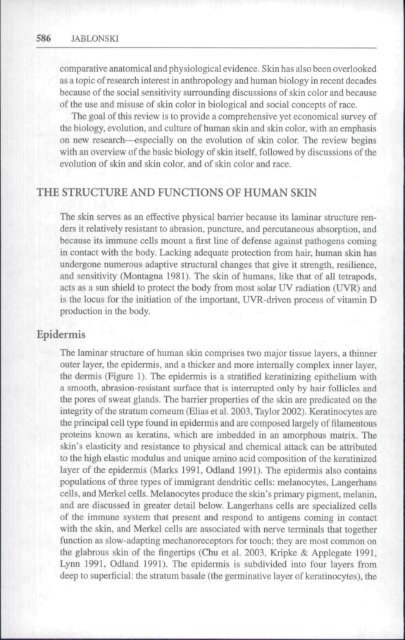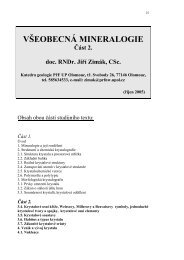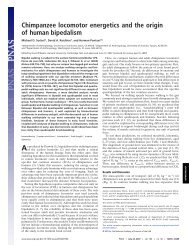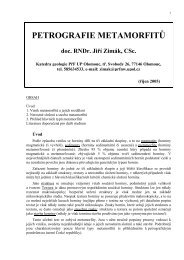THE EVOLUTION OF HUMAN SKIN AND SKIN COLOR Nina G ...
THE EVOLUTION OF HUMAN SKIN AND SKIN COLOR Nina G ...
THE EVOLUTION OF HUMAN SKIN AND SKIN COLOR Nina G ...
Create successful ePaper yourself
Turn your PDF publications into a flip-book with our unique Google optimized e-Paper software.
586 JABLONSKIcomparative anatomical and physiological evidence. Skin has also been overlookedas a topic of research interest in anthropology and human biology in recent decadesbecause of the social sensitivity surrounding discussions of skin color and becauseof the use and misuse of skin color in biological and social concepts of race.The goal of this review is to provide a comprehensive yet economical survey ofthe biology, evolution, and culture of human skin and skin color, with an emphasison new research—especially on the evolution of skin color. The review beginswith an overview of the basic biology of skin itself, followed by discussions of theevolution of skin and skin color, and of skin color and race.<strong>THE</strong> STRUCTURE <strong>AND</strong> FUNCTIONS <strong>OF</strong> <strong>HUMAN</strong> <strong>SKIN</strong>The skin serves as an effective physical barrier because its laminar structure rendersit relatively resistant to abrasion, puncture, and percutaneous absorption, andbecause its immune cells mount a first line of defense against pathogens comingin contact with the body. Lacking adequate protection from hair, human skin hasundergone numerous adaptive structural changes that give it strength, resilience,and sensitivity (Montagna 1981). The skin of humans, like that of all tetrapods,acts as a sun shield to protect the body from most solar UV radiation (UVR) andis the locus for the initiation of the important, UVR-driven process of vitamin Dproduction in the body.EpidermisThe laminar structure of human skin comprises two major tissue layers, a thinnerouter layer, the epidermis, and a thicker and more intemally complex inner layer,the dermis (Figure 1). Tbe epidermis is a stratified keratinizing epithelium witha smooth, abrasion-resistant surface that is interrupted only by hair follicles andthe pores of sweat glands. The barrier properties of the skin are predicated on theintegrity of the stratum comeum (Elias et al. 2003, Taylor 2002). Keratinocytes arethe principal cell type found in epidermis and are composed largely of filamentousproteins known as keratins, which are imbedded in an amorphous matrix. Theskin's elasticity and resistance to physical and chemical attack can be attributedto the high elastic modulus and unique amino acid composition of the keratinizedlayer of the epidermis (Marks 1991, Odiand 1991). The epidermis also containspopulations of three types of immigrant dendritic cells: melanocytes, Langerhanscells, and Merkel cells. Melanocytes produce the skin's primary pigment, melanin,and are discussed in greater detail below. Langerhans cells are specialized cellsof the immune system that present and respond to antigens coming in contactwith the skin, and Merkel cells are associated with nerve terminals that togetherfunction as slow-adapting mechanoreceptors for totich; they are most common onthe glabrous skin of tbe fingertips (Chu et al. 2003, Kripke & Applegate 1991,Lynn 1991, Odiand 1991). The epidermis is subdivided into four layers fromdeep to superficial; the stratum basale (the germinative layer of keratinocytesj, the
















